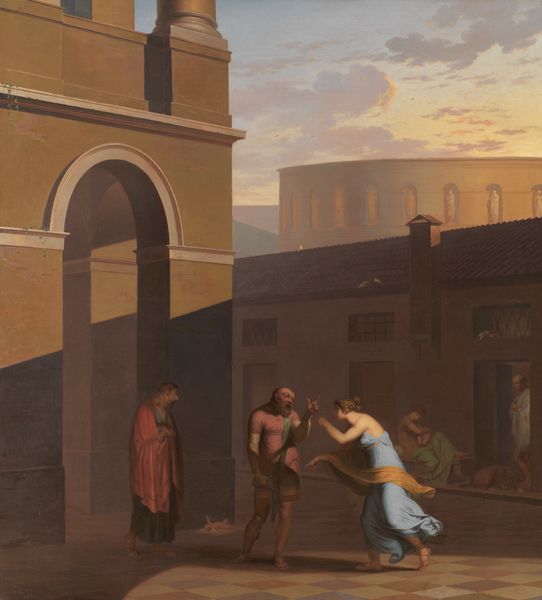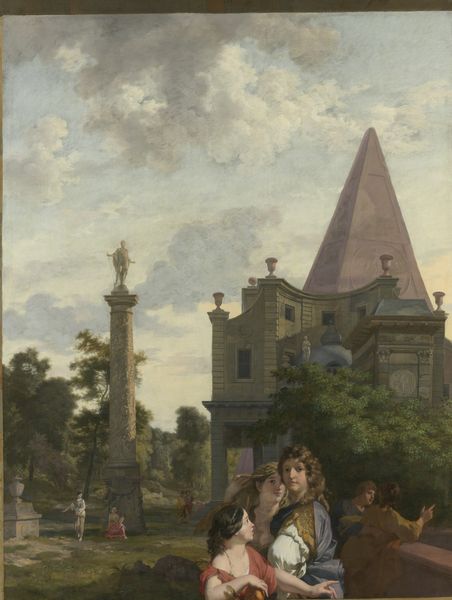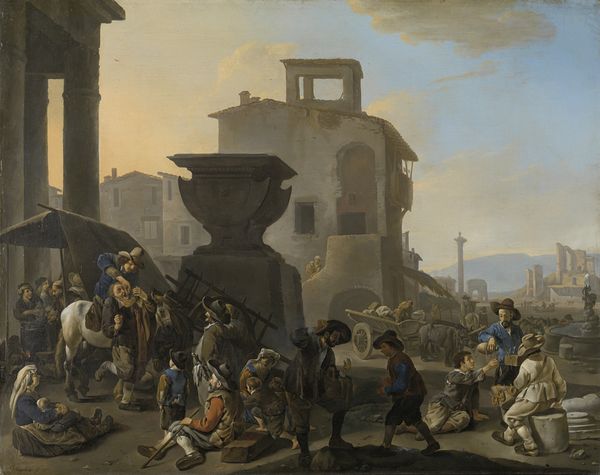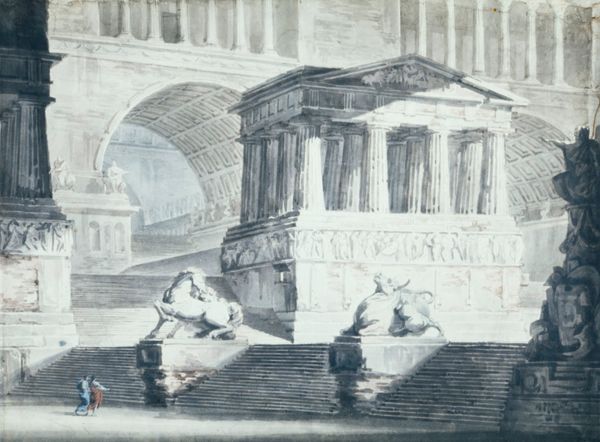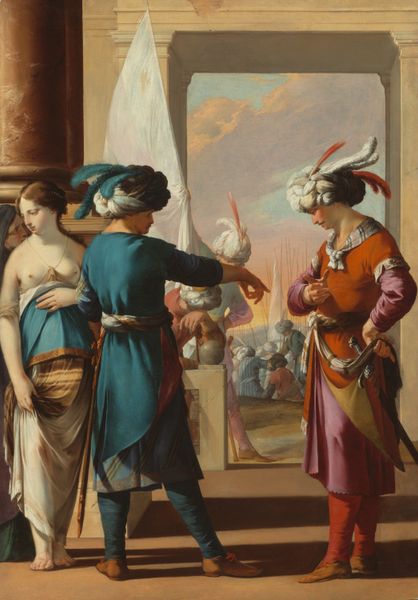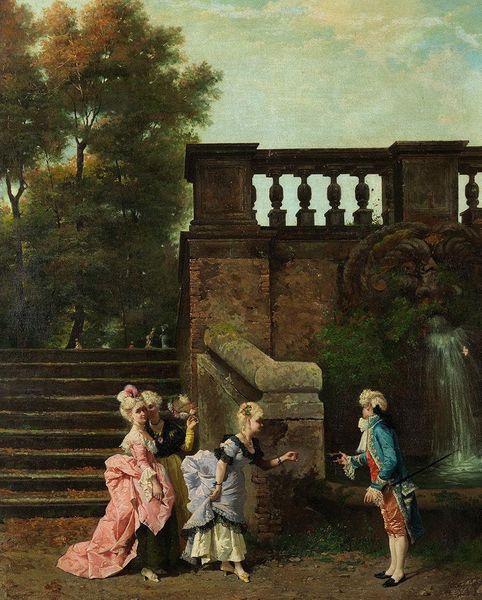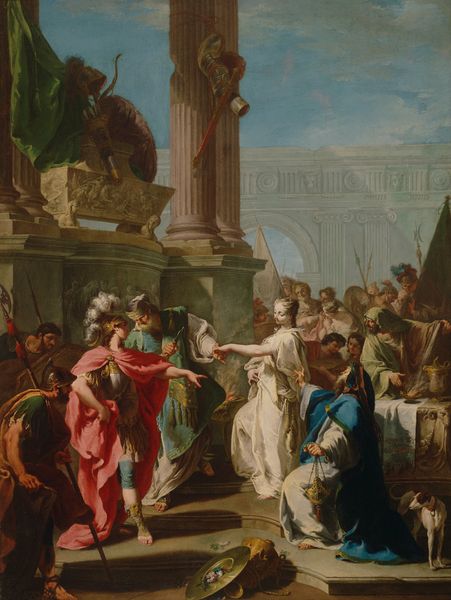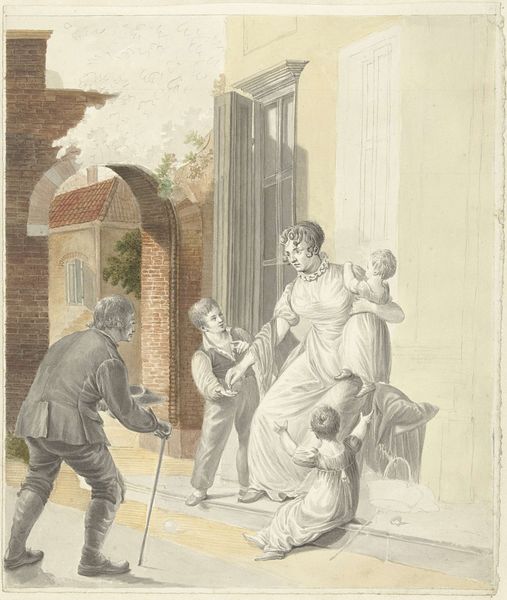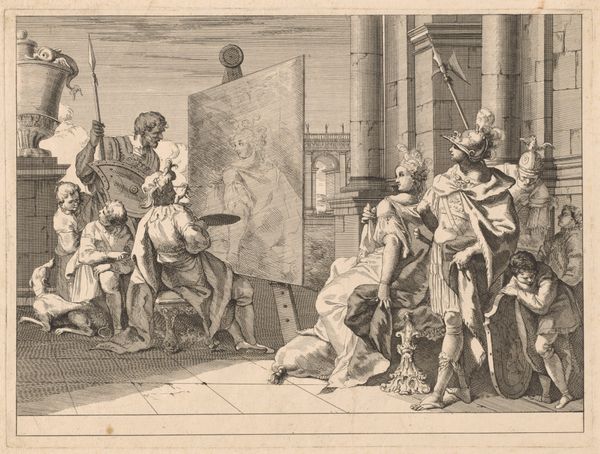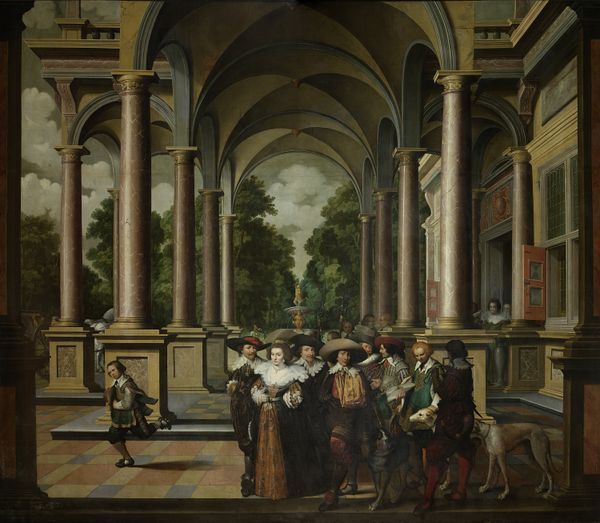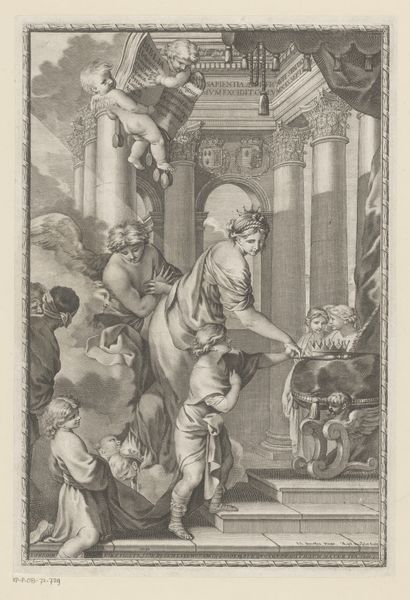
Pamphilius and his sevant Davus. From Terence´s Andria 1802
0:00
0:00
painting, oil-paint, canvas
#
portrait
#
neoclacissism
#
painting
#
oil-paint
#
landscape
#
classical-realism
#
perspective
#
figuration
#
oil painting
#
canvas
#
history-painting
#
academic-art
Dimensions: 157.5 cm (height) x 128.5 cm (width) (Netto), 169.4 cm (height) x 141 cm (width) x 7.6 cm (depth) (Brutto)
Editor: Here we have Nicolai Abildgaard’s "Pamphilius and his Servant Davus. From Terence’s Andria," painted in 1802 using oil on canvas. The neoclassical architecture dominates the scene, almost dwarfing the figures. I am drawn to the linear perspective; the receding lines and strong shadows give the composition a powerful depth. What are your initial observations? Curator: I am immediately struck by Abildgaard's calculated arrangement of forms. Consider how the orthogonal lines converge to create a sense of spatial recession. How does this calculated depth contribute to the overall reading of the narrative? Editor: It creates a stage-like space where we, the viewers, become the audience to the scene unfolding. The figures seem to perform within the architecture's rigid structure. Curator: Precisely. Note also the subdued palette. The limited range of earth tones and pale blues contributes to the work's sense of classical restraint. Abildgaard carefully modulated light and shadow to model the figures and architectural elements, further enhancing the pictorial depth and volume. Do you perceive any disharmony that could yield deeper insight? Editor: The dog at the bottom right looks rather out of place – not stylistically, but tonally it seems like a dark splash, especially near the comparatively pale staircase. Curator: An astute observation! This tension created between the light, rational architecture and the grounded darkness highlights the work’s intrinsic contrasts. Abildgaard masterfully uses these visual strategies to create a complex and compelling pictorial space. Editor: I appreciate how your focus on the formal elements really revealed the strategic, almost mathematical structure of the composition, and the tension therein. Curator: And your interpretation illuminates a dimension that goes beyond the surface aesthetics of classical order. It seems as though we have collectively decoded how the artist strategically utilizes intrinsic pictorial cues to build structural meaning in their art.
Comments
No comments
Be the first to comment and join the conversation on the ultimate creative platform.

